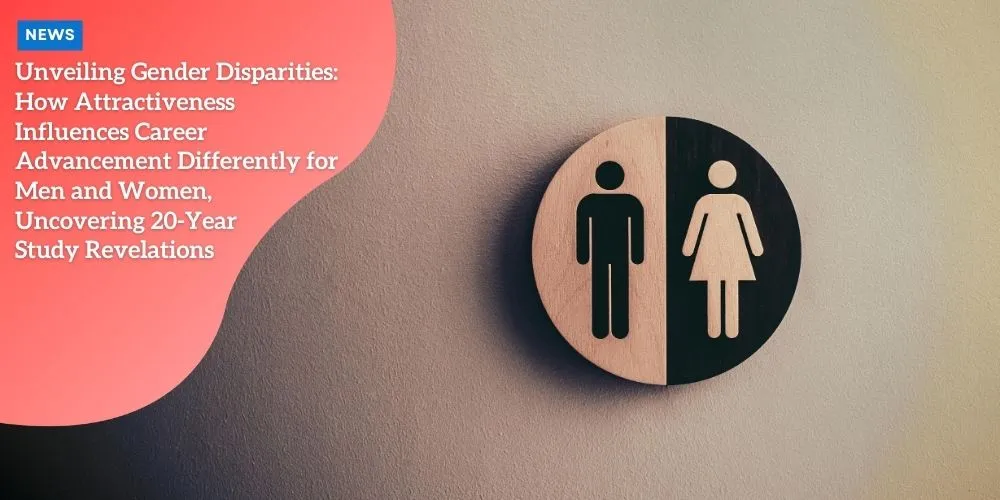Unveiling Gender Disparities: How Attractiveness Influences Career Advancement Differently for Men and Women, Uncovering 20-Year Study Revelations

Beauty and the Bias: Untangling the Complexities of Attractiveness in the Workplace
The professional landscape often aspires to be a meritocracy, a space where skills, expertise, and dedication pave the way for career success.
Anúncios
In theory, if you work hard enough and possess the right talents, your career should naturally flourish. But the reality is often more complicated.
The question arises: What role does physical appearance play in this equation? Does being conventionally attractive truly translate to a smoother, faster career path, or is this simply an illusion? Recent research is delving deeper into this complex question, revealing a fascinating and multifaceted interplay between beauty, gender, and professional trajectories.
Beyond the Surface: Redefining the Beauty-Success Correlation
The traditional assumption that physical attractiveness is a guarantee of success in the workplace is increasingly being challenged.
Anúncios
Conventional wisdom tells us that beauty opens doors, grants preferential treatment, and expedites promotions.
This view persists in popular culture, where attractive individuals are often portrayed as having an easier time in life.
However, recent nuanced research is beginning to challenge this oversimplified notion, especially when gender is factored into the equation.
Anúncios
While it’s true that some individuals benefit from being deemed “conventionally attractive,” the effects are far more complex and not universally advantageous.
A Two-Decade Deep Dive: Unveiling Gender Disparities in Professional Growth
Sociologists Gugushvili and Bulczak embarked on a comprehensive study that followed the career trajectories of over 11,000 individuals over a span of two decades.
Their research offers a groundbreaking examination of how attractiveness influences professional success, revealing some profound gender-based disparities.
While attractive men seem to experience tangible professional advantages—such as more opportunities for promotions and higher salaries—women are not necessarily afforded the same benefits.
In fact, their findings suggest that women who are conventionally attractive might face more hurdles and biases, which can, in some cases, be detrimental to their career advancement.
Understanding the Gender Lens: Historical Biases and Their Evolution
The relationship between beauty and career progression has always been fraught with gendered expectations and biases.
Historically, society has viewed physical attractiveness as a potent advantage, but how this advantage manifests for men and women has been drastically different.
For men, being attractive is often perceived as a sign of greater competence and potential for leadership roles.
Attractive men tend to be viewed as more confident, charismatic, and capable—traits that naturally align with leadership expectations in many professional environments.
However, this same perception does not always benefit women in the workplace.
For women, beauty has been historically tied to femininity, which, in turn, has been associated with nurturing, kindness, and emotional intelligence.
These traits are often valued in caregiving or administrative roles, but they are not necessarily linked to qualities that are traditionally associated with leadership and intellectual authority.
In fact, when women are seen as too attractive, their professional credibility can be undermined.
Instead of being taken seriously for their qualifications and skills, they may face the “beauty bias,” where their looks overshadow their expertise, causing their career potential to be underestimated.
Beyond Hiring: The Persistent Impact of Unconscious Bias
The biases tied to beauty and gender are not confined to hiring practices alone; they seep into every aspect of professional life, from promotions to salary negotiations to everyday interactions in the workplace.
Attractive men benefit from an implicit assumption that they are capable and deserving of advancement, whereas attractive women often face subconscious bias.
Women who are considered attractive may be subject to an array of challenges, ranging from sexualized attention that diminishes their professional persona to being stereotyped as less competent.
Research shows that women in the workplace are more likely to experience frequent interruptions during meetings, have their ideas dismissed or attributed to male colleagues, and be passed over for leadership roles in favor of less qualified men.
Even when attractive women are exceptionally qualified, they may be dismissed as “too good-looking to be taken seriously” or assumed to have attained their position based on their appearance rather than their talent.
This deeply ingrained bias can result in fewer opportunities for career progression and less visibility in professional networks.
The Gugushvili and Bulczak Study: Disparities and Implications Revealed
Gugushvili and Bulczak’s study provides a thorough and evidence-based examination of the gendered disparities tied to attractiveness.
Their research reveals that men who are perceived as attractive are significantly more likely to be promoted to managerial positions and command higher salaries compared to their average-looking counterparts.
Conversely, attractive women often find themselves in a paradoxical situation: while they may initially enjoy benefits such as increased attention or social capital, they also face what has been dubbed the “beauty is beastly” effect.
This effect refers to the phenomenon in which women who are deemed attractive are less likely to be considered for leadership roles because they are perceived as less competent, as their beauty detracts from their professional abilities in the eyes of colleagues and superiors.
This disparity underscores the complex and contradictory ways that beauty influences professional success.
It also highlights the fact that what works as an advantage for men can act as a barrier for women, creating a system of inequality that is difficult to navigate.
The research by Gugushvili and Bulczak points to the need for a broader understanding of how biases are formed and how they can be mitigated, especially in the context of workplace dynamics.
Breaking Down the Barriers: Strategies to Promote Equity
Addressing the unconscious biases related to beauty and gender requires a multifaceted approach.
One critical first step is raising awareness of these biases within organizations.
This can be done through workshops, training, and open discussions that allow employees to recognize their own unconscious prejudices and learn strategies for mitigating them.
Awareness initiatives can also help employees understand how subtle forms of bias—such as interruptions, biased attributions of competence, or unequal access to opportunities—manifest in day-to-day professional interactions.
Another vital strategy is establishing clear, objective criteria for evaluations, promotions, and salary negotiations.
Relying on measurable metrics such as performance reviews, skills assessments, and documented achievements can help ensure that professional success is based on merit, rather than appearance.
Additionally, mentorship programs can be invaluable for both men and women, providing them with guidance on navigating workplace dynamics and advancing their careers.
To achieve a truly inclusive and equitable workplace, organizations must enact policies that address systemic inequalities.
Equal pay initiatives, diversity programs, and clear anti-discrimination policies can create an environment where all employees, regardless of gender or physical appearance, have the same opportunity to succeed.
Moreover, fostering a company culture that prioritizes diversity and inclusion will promote the idea that merit—rather than looks—should be the determining factor in career success.
Building a More Equitable Future: The Power of Advocacy and Inclusion
Creating a workplace environment where merit reigns supreme, and opportunities are awarded based on skill and competence, requires a collective effort.
This means challenging the ingrained beauty standards that continue to shape workplace dynamics and promoting a culture where all employees, regardless of appearance or gender, have the opportunity to thrive.
By actively supporting ongoing research that delves into the complexities of attractiveness and career success, organizations and individuals can work together to understand the nuances of bias and develop strategies to combat it.
Furthermore, advocating for policies that promote equity in all aspects of professional life is essential.
This includes ensuring equal access to career advancement opportunities, fighting for fair pay, and promoting a culture of inclusion that embraces people from diverse backgrounds.
By embracing these changes, businesses can create a more inclusive and equitable environment, which in turn fosters a stronger and more innovative workforce.
Ultimately, a future workplace that values talent, expertise, and hard work over physical appearance benefits not only individual employees but also organizations as a whole.
When businesses prioritize diversity and create inclusive policies, they tap into a broader talent pool, enhancing creativity, boosting productivity, and driving overall success.
A workplace free from gendered beauty biases will allow all individuals to succeed based on their merits, fostering a more dynamic and thriving professional environment.





